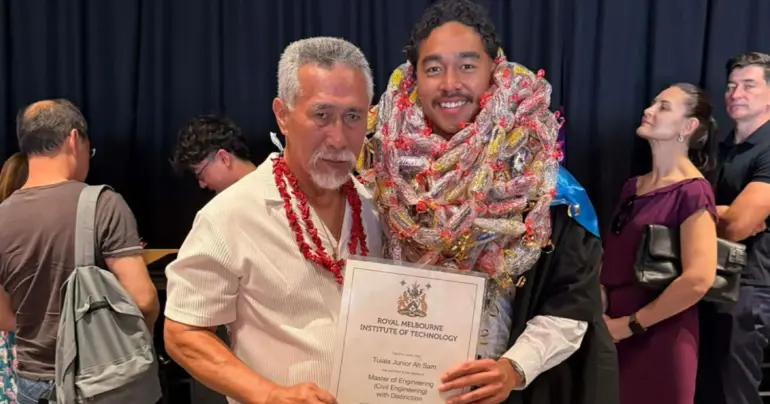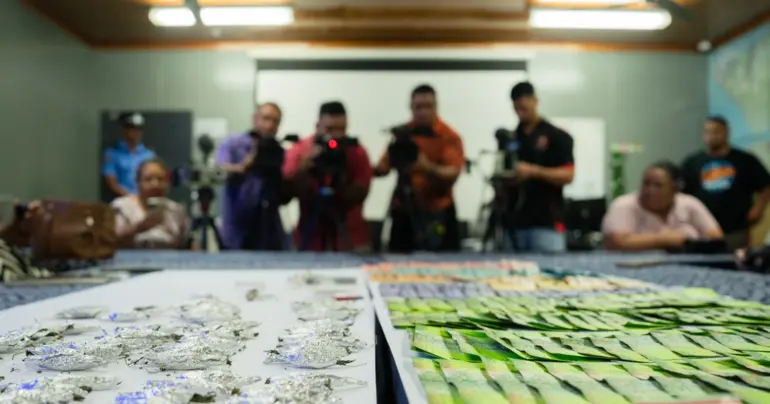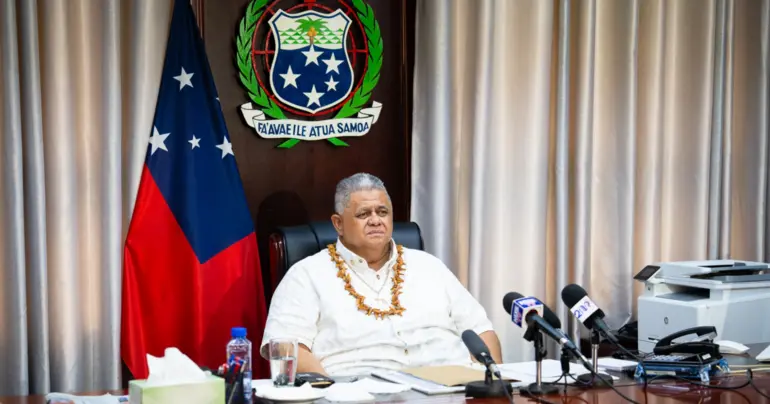Top World Health official cautious on outcome of mass vaccination drive
 By Sapeer Mayron
•
07 December 2019, 7:00PM
By Sapeer Mayron
•
07 December 2019, 7:00PM
With nearly the entire targeted population vaccinated against measles, Samoa will be hoping to see a slowdown of infections in the coming weeks.
But Dr. Rasul Baghirov, the World Health Organisation's (W.H.O.) representative in Samoa, is cautious to suggest a date on the end of the epidemic that has claimed 63 lives.
A mass vaccination campaign that began on November 20 vaccinated over 90,000 people, while a mobile door to door campaign vaccinated over 40,000 in just two days.
The Government has targeted nearly 145,000 people for immunisation, excluding the population too young or too old for their shots, or with other complicating factors.
Dr. Bhagirov said it is important to continue isolating vulnerable children for at least three weeks after they are vaccinated while immunity builds in them.
He believes until vaccination rates reach more than 95 per cent in children aged six months to four years old, the epidemic’s devastating effects will not wane.
“It is important to immunise everyone but at the same time we want to keep the focus on that younger group,” Dr. Baghirov said.
“When we will see the immunisation coverage in that group come into the higher 90s I think then we will be confident the epidemic will go down.”
Currently, the Government’s best vaccination estimates put coverage of the youngest children at 85 per cent. More accurate figures will be available after the weekend, the country was told.
Dr. Baghirov said until more data is revealed it will be too hard to say when the epidemic will finally end.
“We need to know what the coverage is, but we do expect that when everyone possible in Samoa is vaccinated we will see cases going down, that is definite.
“Whether it will happen in two to three weeks; that is more difficult to say. We need to know more about the numbers and in particular in children between six months and four years.”
Dr. Nikki Turner, chair of the immunisation working group to the Strategic Advisory Group of Experts (S.A.G.E.) to the World Health Organisation (W.H.O.) said if the figures are accurate, the epidemic will end, but not soon.
“It takes a good two weeks for immunity to build up and vaccinated people can still get measles,” she cautioned. But in every country, even a mass campaign can miss “pockets” of people.
“Even if you vaccinate most people, what we find is that if there is a group, or pocket or village that has been missed out then measles can still spread.
“Then, when you think the epidemic is over, you still might have areas where people have been missed and I think that is the important thing to look for.”
Those pockets can be people living especially remotely, or anyone who was out of the country and missed their shot. They might be in insecure housing, or actively avoiding vaccination, Dr. Turner said.
In New Zealand, where the measles epidemic has begun tapering off, small groups of unvaccinated people will mean the virus will continue to circulate.
“We (New Zealand) are over the worst of it but we are not fully through measles. It is the same problem in Samoa, there are still groups of people out there who have missed out on vaccination and measles is so highly virulent that if there is even a small gap in protection it will get in and spread.”
It is problem for the entire international community to face, Dr. Turner added. Frequent travel means the measles will spread anywhere there is low immunisation, meaning the W.H.O are not likely to successfully eradicate it anytime soon.
“What we now know is we need to put a lot more effort in for every country, to strengthen their primary healthcare, to get coverage up and then keep it up over time.
“It is a responsibility for all of us and unfortunately Samoa, in our part of the world, has got the brunt of this.”
The measles epidemic, which has hit Samoa so hard, also travelled across the Pacific. There are 458 cases in Tonga, 18 in Fiji and four in American Samoa, with no deaths reported so far.
The countries report immunisation rates well above the 90s, though Tonga intends to revaccinate a large group of its population.
Asked why the neighbouring countries had such significantly higher coverage, Dr. Turner said there are always gaps and differences in the world’s health systems.
“What I can say is all around the world there is a huge range in how well people do in immunisation coverage and also in equity gaps, so immunisation particularly to the people for whom it’s the hardest.
“You are talking about people in severe poverty, people with multiple children; those are the families you have to think about it.
“It’s really up to Samoa to find a system that works effectively for the Samoan community, not somebody else’s system.”
Tags
 By Sapeer Mayron
•
07 December 2019, 7:00PM
By Sapeer Mayron
•
07 December 2019, 7:00PM











